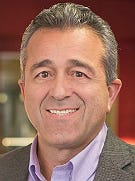Autotask Exec, Partner: Channel Consolidation Is Changing Everything
Will the consolidation trend be the channel's next sea change?

Ask many longtime IT service providers about which technological advancement has had the biggest impact on their business, and there’s a strong chance that RMM will enter the conversation.
Before remote monitoring and management capabilities, the channel had to physically travel to their clients, or take remote control of one computer at a time to install updates and patches. It effectively kept partners from building businesses that were based on recurring revenue. There’s little doubt that in the world of managed IT services, life before RMM looked very different from life after RMM.
Len DiCostanzo, senior vice president of channel development at Autotask, thinks the channel is experiencing another watershed moment that will change the way MSPs do business. The sheer number of applications, devices, and storage and compute architectures can be overwhelming even to large service providers, since today most of them come from multiple vendors and need back-end tweaking to run as one cohesive system. There’s plenty of work out there for systems integrators, but with new offerings coming out of the woodwork, it can be difficult for MSPs to handle all of those moving parts.

Len DiCostanzo
Len DiCostanzo
“Single pane of glass,” therefore, is more than just the latest business buzzword. It’s a demand that channel players increasingly are clamoring for, and it’s one of the top partner benefits DiCostanzo sees coming out of all of the consolidation happening in the channel, including the recent merger of Autotask with data-protection solution provider Datto, announced late last year.
“One of our biggest objectives is standardization of our tool set,” says Abby Warner, chief operating officer at managed service provider The Brookfield Group. “The fewer interfaces my engineers have to log into to support the thousands of customers we have, the more efficient they’re going to be.”
In Autotask’s early days as a pure-play PSA provider, says DiCostanzo, the company relied heavily on integrations with other solutions. But when it acquired RMM provider Centrastage, now Autotask Endpoint Management, in 2014, it realized that unification was a much better solution than integration. It simplified life for Autotask’s partners, and therefore increased the value of Autotask’s offerings. Next, the company acquired enterprise-grade file sync and share application provider Soonr and unified the resulting platform, Autotask Workplace, with its existing offerings.
“Now, as we roll into the Datto product suite, we already had a tight integration with RMM and the BCDR solution Datto had, but it’s going to take on a whole new look and feel as we unify under that one pane-of-glass approach,” says DiCostanzo. “It’ll provide that unification and also be another recurring revenue driver for our partners.”
This is welcome news to partners like Brookfield.
“Integrations are nice,” says Warner. “But that single pane of glass is just so much better.”
Brookfield has been an Autotask customer for close to two decades. At the time of the Centrastage acquisition, the MSP had been using a competing RMM solution for more than 15 years. But the value that Autotask brought to the table once the two technologies were integrated was enough to make Brookfield overhaul its offerings. MSPs have to continually become more efficient in how they support customers if they want to maintain a level of profitability, something Warner says is reflected in Autotask’s partnership and acquisition strategies.
“Now, as the Datto and Autotask merger goes through, it’s more tools that we need so we’re prepared to take care of our customers efficiently and with a high level of service with the best quality products on the market,” she says. “It’s like they’re writing that playbook for us.”
About the Author(s)
You May Also Like


